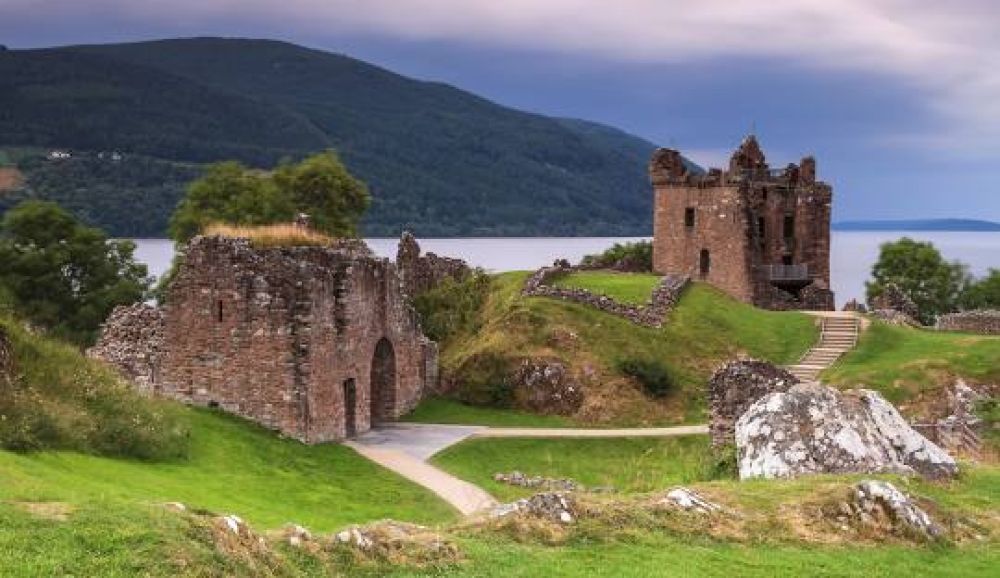

Loch Ness, situated in the Highlands of Scotland near Inverness, has been a magnet for tourists from around the world. The loch is best known for the mythical Loch Ness Monster, or "Nessie," a legendary creature that is said to inhabit its waters. This legend has a long history, with the first recorded sighting by Saint Columba in 565 AD. However, it wasn't until the 1930s, with the publication of a photograph purportedly showing Nessie, that modern interest in Loch Ness really exploded.
Tourism began to flourish significantly post-World War II, when road improvements made the area more accessible, allowing sightseers and monster hunters alike to flock to the loch. The construction of the A82 road alongside the lake provided an even bigger boost to visitor numbers. Today, tourism at Loch Ness centers on monster-themed attractions, boat tours on the loch, and the exploration of the surrounding natural beauty of the Highlands.
Urquhart Castle, located on the western shore of Loch Ness, is a historical gem that is intrinsically tied to the region's appeal. With roots dating back over 1,500 years and playing a significant role in the Scottish struggle for independence during the Middle Ages, its picturesque ruins offer a vivid connection to Scotland’s storied past.
While the significance of Urquhart Castle has always been acknowledged, its rise as a tourist destination coincided with the increased popularity of Loch Ness itself. By the late 20th century, the site had developed into a major tourism hotspot. Historic Scotland undertook the task of preserving the ruins and adding visitor facilities, such as a visitor center opened in 1996, which provides historical exhibits and stunning views of the loch.
In recent years, tourism trends around Loch Ness and Urquhart Castle have evolved, with a greater emphasis on eco-friendly travel and outdoor activities. Tourists are seeking more authentic and immersive experiences, such as wildlife watching, hiking, and even monster-hunting expeditions using sonar technology.
The use of modern technology has also become more prevalent in enriching the visitor experience. Augmented reality (AR) apps now allow people to envision how the castle might have looked in its prime. Additionally, social media has played an important role in promoting the area, with travelers keen to capture and share their experiences with friends and followers.
Despite the changes in tourism trends, one constant remains: the enduring appeal of the loch's mysterious charm and the castle's romantic allure. Whether driven by myth, history, or the stunning Highland scenery, the combination of Loch Ness and Urquhart Castle continues to capture the hearts of visitors, ensuring a vibrant future for tourism in the region.